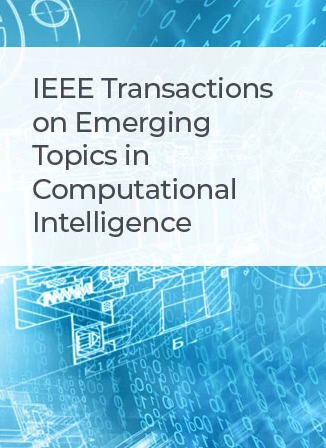Visual IoT Sensing Based on Robust Multilabel Discrete Signatures With Self-Topological Regularized Half Quadratic Lifting Functions
IF 5.3
3区 计算机科学
Q1 COMPUTER SCIENCE, ARTIFICIAL INTELLIGENCE
IEEE Transactions on Emerging Topics in Computational Intelligence
Pub Date : 2024-12-31
DOI:10.1109/TETCI.2024.3514999
引用次数: 0
Abstract
The Visual Internet of Things (VIoT) is a next-generation key component to smart cities as it provides more clues for backend analysis. However, the VIoT needs to preliminarily screen/tag data before dispatching them to edge nodes. Moreover, when incomplete data are present, e.g., continuously occluded images, mislabeling may occur, not to mention detecting multilabels accurately. Another challenge is that although pairwise similarities via graph regularization/embedding strengthen label estimation, it is hard to determine the weights/locality between pairwise samples. Besides, static weighting may create rigid topologies owing to fixed distances, which hardly reflect data locality and subsequently cause fitting biases. In view of such, this work presents a discrete signature generation method that can analyze and convert corrupted data into robust signatures, thereby maintaining VIoT recognition functionalities. In this study, half quadratic lifting functions are introduced to accommodate fitting biases caused by data corruption which cannot be effectively solved by基于自拓扑正则化半二次提升函数鲁棒多标签离散签名的视觉物联网感知
视觉物联网(VIoT)是智慧城市的下一代关键组件,因为它为后端分析提供了更多线索。但是,在将数据发送到边缘节点之前,VIoT需要对数据进行初步筛选/标记。此外,当存在不完整的数据时,例如连续遮挡的图像,可能会发生错误标记,更不用说准确检测多标记了。另一个挑战是,尽管通过图正则化/嵌入的两两相似性增强了标签估计,但很难确定两两样本之间的权重/局部性。此外,由于固定的距离,静态加权可能会产生刚性拓扑,难以反映数据的局域性,从而导致拟合偏差。鉴于此,本工作提出了一种离散签名生成方法,该方法可以分析并将损坏的数据转换为鲁棒签名,从而保持VIoT识别功能。在本研究中,引入半二次提升函数来适应由$\ well _{2}$、$\ well _{1}$和$\ well _{2,1}$规范不能有效解决的数据损坏引起的拟合偏差。为了避免成对样本之间的刚性距离和实现灵活的自动加权,提出了自拓扑图嵌入/正则化,其中数据的局域性可以动态调整/从数据中学习。此外,为了避免由自拓扑图引起的二次无约束二值优化,设计了离散签名的半松弛,并实现了有效的离散循环坐标下降(DCCD)算法用于离散签名优化。最后,给出了相应的解相关约束和平衡约束。在开放数据集上的实验表明,该方法的平均精度(mAP)优于基线。结果显示,mAP对不同噪声类型(包括连续遮挡、缺失值和样本特定异常值)的改善,分别增加了$\mathbf {10.97}\boldsymbol{\%}$、$\mathbf {8.05}\boldsymbol{\%}$和$\mathbf {9.72}\boldsymbol{\%}$。这些发现证实了所提出的想法的有效性。
本文章由计算机程序翻译,如有差异,请以英文原文为准。
求助全文
约1分钟内获得全文
求助全文
来源期刊

IEEE Transactions on Emerging Topics in Computational Intelligence
Mathematics-Control and Optimization
CiteScore
10.30
自引率
7.50%
发文量
147
期刊介绍:
The IEEE Transactions on Emerging Topics in Computational Intelligence (TETCI) publishes original articles on emerging aspects of computational intelligence, including theory, applications, and surveys.
TETCI is an electronics only publication. TETCI publishes six issues per year.
Authors are encouraged to submit manuscripts in any emerging topic in computational intelligence, especially nature-inspired computing topics not covered by other IEEE Computational Intelligence Society journals. A few such illustrative examples are glial cell networks, computational neuroscience, Brain Computer Interface, ambient intelligence, non-fuzzy computing with words, artificial life, cultural learning, artificial endocrine networks, social reasoning, artificial hormone networks, computational intelligence for the IoT and Smart-X technologies.
 求助内容:
求助内容: 应助结果提醒方式:
应助结果提醒方式:


